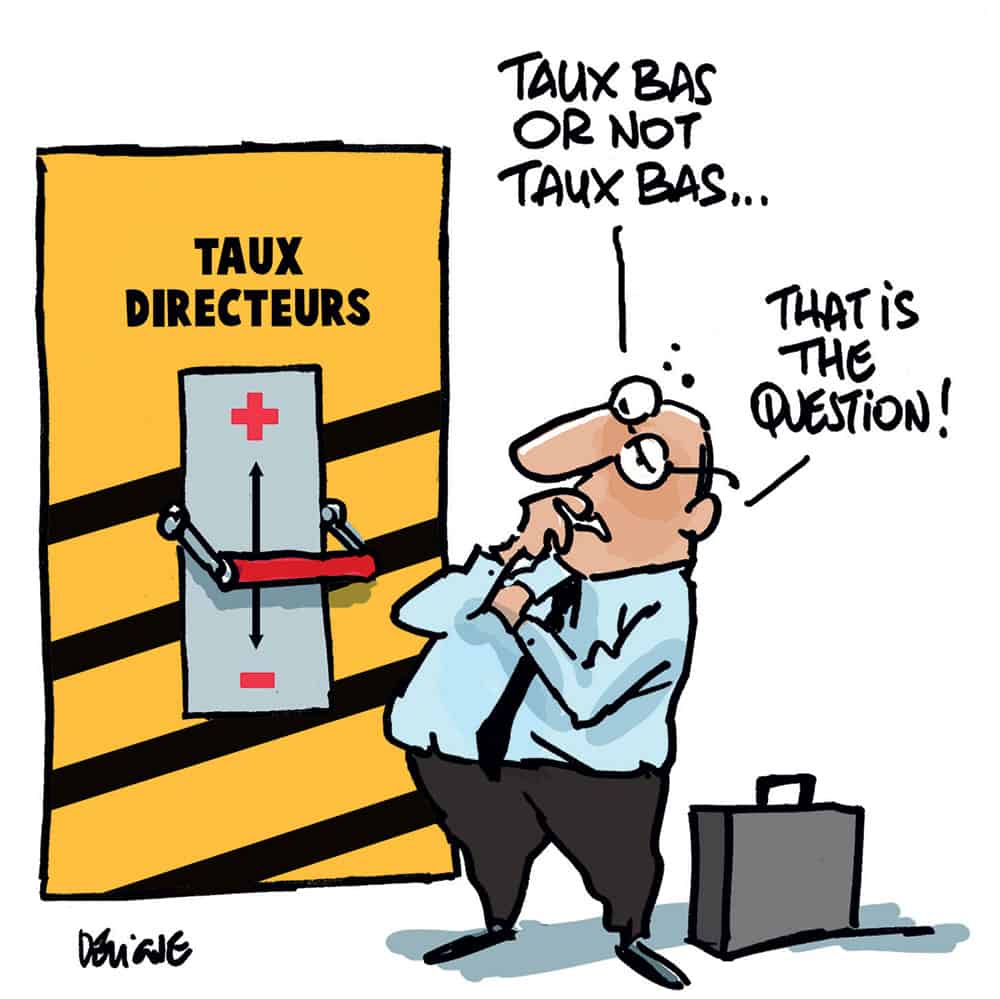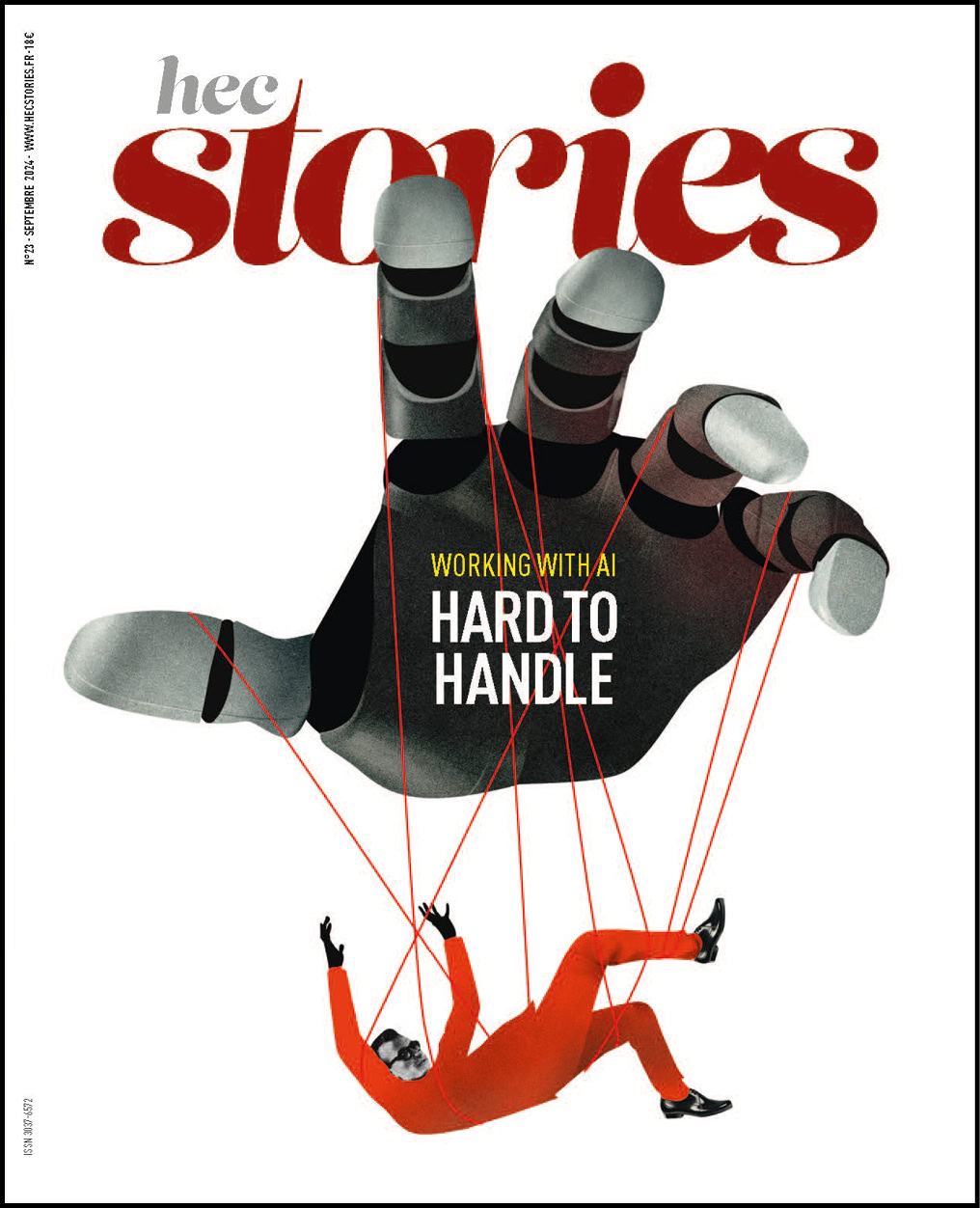Should the ECB raise key interest rates?

FOR
“Quantitative easing was a fruitless exercise.”

is a graduate of HEC and of the Paris Institute of Political Studies. He was CEO of the Bordeaux-based Industrial and Commercial Credit company, minister-consultant at the French embassy in Mexico, and financial consultant concerning Latin America and the Caribbean at the Treasury Department. He is president of the supervisory board of Delubac et Cie bank.
For the past 30 years, France, like its neighboring countries, has been experiencing competitive disinflation. Inflation rates – and therefore interest rates – have fallen to near zero. The European Central Bank’s (ECB’s) key interest rates, designed to achieve a balance between borrowing and lending rates, do so through bank intermediation and intermediation in capital markets. We’ll begin with bank intermediation. The role of banks is to borrow from depositors in order to loan to borrowers. Low interest rates should have stimulated financing for the real economy, and therefore supported economic growth, but that has not been the case.
In fact, low interest rates don’t encourage companies to boost their production. They are motivated to do this when household demand is likely to rise.
How disinflation slows economic growth
It’s a total paradox: households increase their spending in an inflationary environment! When prices are stagnant or drop, consumers delay their purchases in order to pay less. This is why Olivier Blanchard, the lead economist for the International Monetary Fund (IMF), wanted the ECB’s targeted inflation rate to be raised from 2% to 4.5%. Unfortunately this was not done. In the current disinflationary context, our economy is flatlining. Now we’ll take a look at market intermediation.
When the rates of new issues fall, older corporate bonds grow in market value because they generate higher returns. This rise in asset prices is profitable for individual and institutional investors…but not for the issuing companies! Supply-side policies founded on deflation, introduced in Germany in the 1920s as a result of a hyperinflation fears, has now reached the country’s European partners. This phenomenon was recently denounced by the International Labor Organization, which believes that Germany is dragging its neighbors down. It’s more necessary now than ever to raise interest rates in order to lower asset prices. When accompanied by a Keynesian growth in demand, such a policy will revive corporate investments and, in turn, full employment and growth.
AGAINST
“Low interest rates will make financing the ecological transition possible.”

is a stockbroker, administrator of the Center for Finance Professions and of the National Association of Doctors in Economic and Management Sciences (ANDESE), and honorary president of the Academy of Accounting. He was a lecturer at HEC Paris.
The countercyclical policy practiced in the United States in the 2000s by Ben Bernanke and Hank Paulson, and then adopted by every other country, involved central banks purchasing treasury bills, public-sector bonds and even corporate debt. This policy drove interest rates into the liquidity-trap zone. As long as rates remained within this zone, for example less than 3% in real terms, modifying them had no effect on investment decisions. Indeed, there was no inflation in spite of an incredible increase in the money supply. Now we know why: globalization created a supply greater than “solvent” demand.
Of course some things are subject to inflation, for instance works of art. A triple urinal, property of an illustrious stranger, was sold for three million dollars. (As the Financial Times pointed out, a million dollars per spot was a bit overpriced….)
Green investments will drive future economic growth
Economists have tried to understand this situation. According to “new monetary theory”, we are at the dawn of a period of strong economic growth driven by technological innovations and ecological advances. To encourage these long-term investments, interest rates should remain low for around 10 years. One comment on negative rates. When institutional investors acquire this type of security, they prefer currencies which they hope will appreciate as a result of a trade surplus: Switzerland, Japan and Germany. (Many foreign countries expect that the EU will fall apart and that Germany will then issue its own currency.)
Obviously this situation can only be temporary. We will see a return to classic theories once global debt, currently at 240% of GDP, is reduced through economic recovery. This recovery will be fueled by innovations and “green” investments. The question is this: should we speed up the process of regaining a classic economic system by artificially raising interest rates? No, because that could result in a widespread economic crisis. Better to let rates “take care of themselves” in response to investment needs.
Published by Thomas Lestavel

